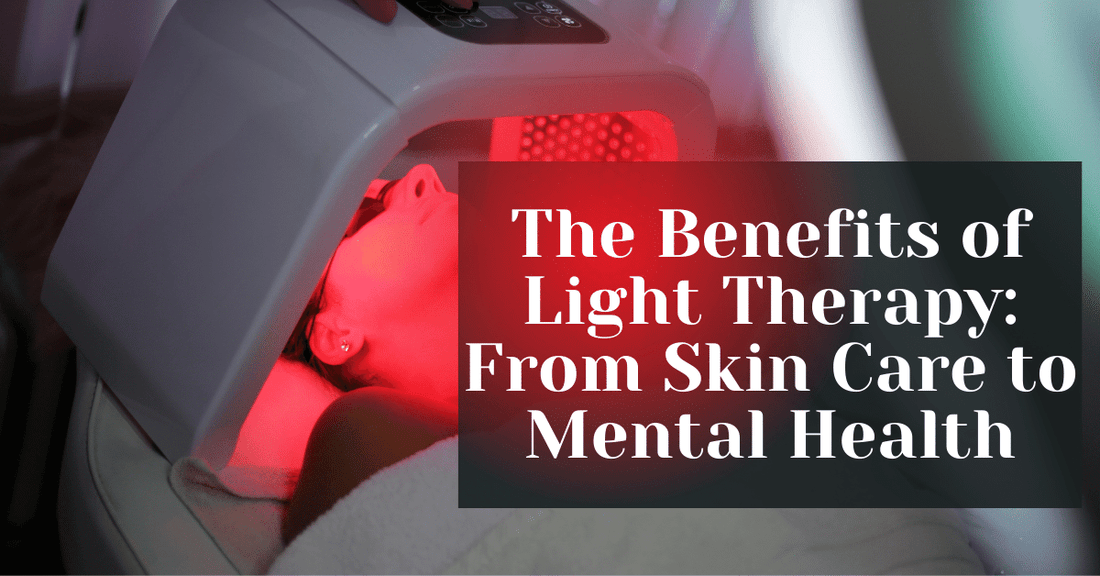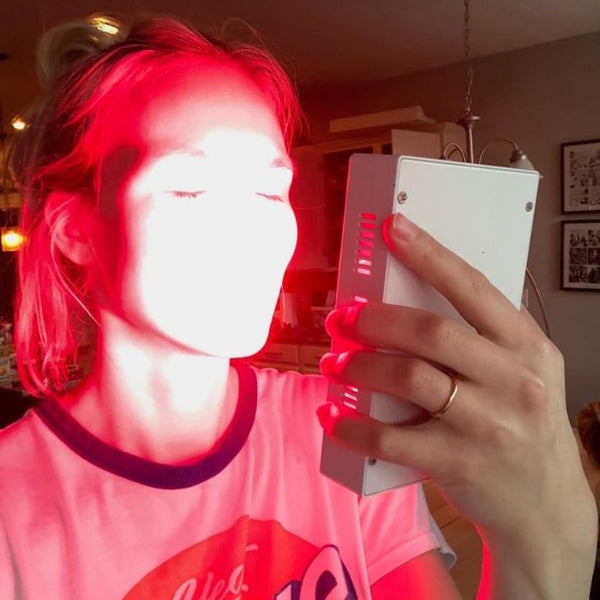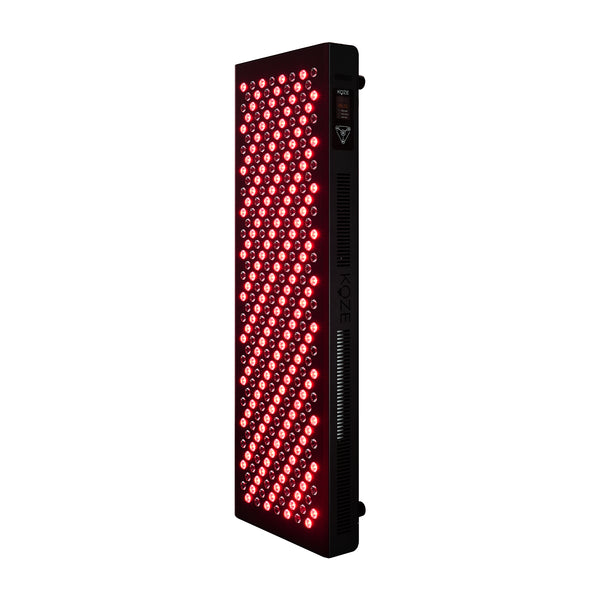
The Benefits of Light Therapy: From Skin Care to Mental Health
Understanding Light Therapy
What is light therapy?
Light therapy, also known as phototherapy, uses specific wavelengths of light to manage various medical and cosmetic conditions. This innovative treatment method has gained popularity for its effectiveness in enhancing skin health and improving mental wellness without the need for invasive procedures or pharmaceuticals.
How does light therapy work?
At its core, light therapy works by exposing the skin or the eyes to light of specific wavelengths using lamps, devices, or lasers. This exposure triggers biological processes in the cells that can lead to improved health outcomes. For the skin, it can enhance cell regeneration and reduce inflammation. For mental health, it can regulate sleep patterns and mood.
Different Types of Light Therapy
- LED (light-emitting diode): used for skin rejuvenation and acne treatment.
- Infrared: penetrates deeper into the body to promote healing and relieve pain.
- UV (ultraviolet): manages skin conditions like psoriasis but requires careful handling due to the risk of skin damage.
The Science Behind Light Therapy

The effectiveness of light therapy is backed by numerous studies. For instance, LED light therapy has been shown to stimulate collagen production, which is essential for youthful skin, and infrared therapy has been proven to aid muscle recovery and reduce joint pain. The precise mechanism involves the absorption of light by photoreceptors in cells, leading to increased ATP (adenosine triphosphate) production, which energizes the cells and promotes healing.
Why It Matters
Understanding the basics of light therapy is crucial for anyone considering this treatment. Knowing how different types of light therapy work helps individuals make informed decisions about which therapy might be best for their specific needs, whether they're seeking solutions for skin issues, mental health challenges, or other health concerns.
Before moving on to the next section, it's important to grasp the foundational knowledge of light therapy, as it sets the stage for exploring its diverse benefits for both skin care and mental health.
Light Therapy for Skin Care
Benefits of Light Therapy for Skin Health

Light therapy has become a game-changer in the realm of skin care, offering a non-invasive solution to a variety of skin concerns. Here are some of the key benefits:
- Acne management: Blue LED light therapy is particularly effective in regulating acne. It works by targeting the bacteria that cause acne, reducing inflammation, and preventing new breakouts.
- Anti-Aging Effects: Red and infrared light therapy are known for their anti-aging properties. They help stimulate collagen production, reduce the appearance of fine lines and wrinkles, and improve skin elasticity.
- Reduction of Inflammation and Redness: Light therapy can soothe irritated skin, reduce redness, and speed up the healing process of various skin conditions, such as rosacea and eczema.
How to Use Light Therapy for Skin Care

Using light therapy for skin care is relatively straightforward.
- Clean Your Skin: Before using a light therapy device, make sure your skin is clean and free of any makeup or products.
- Follow Device Instructions: Each device may have different usage instructions. Typically, you'll need to expose your skin to the light for a specified duration, usually between 10 to 30 minutes.
- Consistency is key: For best results, use light therapy regularly, as directed by the device manufacturer or your dermatologist.
Precautions and Side Effects
While light therapy is generally safe, there are a few precautions to keep in mind:
- Eye Protection: Some devices may require you to wear goggles to protect your eyes from the bright light.
- Skin Sensitivity: If you have sensitive skin, start with shorter sessions and gradually increase the duration as your skin adapts.
- Consult a Professional: It's always a good idea to consult with a dermatologist before starting light therapy, especially if you have existing skin conditions.
Clinical Studies and Research
Numerous studies have backed the efficacy of light therapy for skin care. For instance, a study published in the Journal of Clinical and Aesthetic Dermatology found that LED light therapy significantly improved skin complexion and skin feeling in participants. Another study in the American Journal of Clinical Dermatology highlighted the effectiveness of blue light therapy in managing acne.
Why It Matters
Understanding the benefits and proper usage of light therapy for skin care can empower individuals to make informed decisions about incorporating this technology into their beauty routines. With its ability to address a range of skin concerns without invasive procedures, light therapy offers a promising solution for those seeking to enhance their skin health.
Light Therapy for Mental Health
Light therapy's benefits extend beyond skin care, significantly impacting mental health, particularly for conditions like seasonal affective disorder (SAD), depression, anxiety, and sleep disorders. Here's how light therapy can be a beacon of hope for mental wellness:
Seasonal Affective Disorder (SAD) and Depression

- Efficacy in managing SAD: Light therapy is widely recognized for its effectiveness in managing seasonal affective disorder, a type of depression that typically occurs during the shorter days of fall and winter. By mimicking natural sunlight, light therapy helps regulate the body's sleep-wake cycle and mood.
- Benefits for Non-Seasonal Depression: Research also suggests benefits for non-seasonal depression. A study published in the American Journal of Psychiatry indicated that light therapy, especially when combined with antidepressants, improved depressive symptoms in individuals with non-seasonal depression.
Anxiety and Sleep Disorders

- Reducing Anxiety: While primarily known for managing SAD and depression, light therapy can also reduce symptoms of anxiety, providing a calming effect by regulating circadian rhythms and improving sleep quality.
- Improving Sleep Patterns: Light therapy is beneficial for those with sleep disorders, including insomnia. It helps reset the body's internal clock, promoting healthier sleep patterns and improving overall sleep quality.
How Light Therapy Impacts Mood and Mental Well-being
- Regulation of Serotonin and Melatonin: Exposure to light influences the production of serotonin, a mood-regulating neurotransmitter, and melatonin, which regulates sleep. Light therapy helps balance these chemicals, enhancing mood and sleep.
- Circadian Rhythm Adjustment: By aligning the body's internal clock with the natural environment, light therapy improves energy levels during the day and promotes restfulness at night.
Tips for Incorporating Light Therapy into Your Mental Health Routine
- Consistent Timing: For the best results, use light therapy at the same time each day, typically in the morning, to help regulate your body's clock.
- Appropriate Distance: Position yourself at the correct distance from the light source as recommended by the device manufacturer, usually about 16 to 24 inches.
- Daily Exposure: Start with daily sessions ranging from 20 to 30 minutes, adjusting as recommended by a healthcare provider based on your response.
Precautions and Consultation
While light therapy is generally safe, it's crucial to consult with a healthcare professional before starting, especially if you have a history of bipolar disorder or eye conditions, as light therapy can potentially trigger mania or affect eye health.
The Bottom Line
Light therapy stands as a powerful tool in the battle against mental health challenges, offering a natural, non-invasive method to improve mood, sleep, and overall well-being. By understanding its benefits and incorporating them wisely into mental health care routines, individuals can harness light's power to illuminate the path to better mental health.
Other Health Benefits of Light Therapy
While light therapy is renowned for its skin care and mental health benefits, its healing powers extend to other areas of health and wellness. Here are some additional benefits that light therapy offers:
Pain Relief and Muscle Recovery
- Reducing Chronic Pain: Infrared light therapy has shown promise in reducing chronic pain, including conditions like fibromyalgia and arthritis. By penetrating deep into tissues, it promotes circulation and reduces inflammation, leading to pain relief.
- Enhancing Muscle Recovery: Athletes and fitness enthusiasts can benefit from light therapy's ability to accelerate muscle recovery. By increasing blood flow and reducing muscle fatigue, it helps speed up the healing process after intense physical activity.
Boosting the Immune System
- Strengthening Immune Response: Light therapy can positively impact the immune system. Exposure to certain wavelengths of light can stimulate the production of white blood cells, which play a crucial role in defending the body against infections and diseases.
- Reducing Inflammation: By lowering inflammation, light therapy contributes to a healthier immune system. Chronic inflammation can suppress immune function, so reducing it helps bolster the body's natural defenses.
Improving Circadian Rhythms and Sleep Patterns
- Regulating Sleep-Wake Cycles: Light therapy is effective in fixing circadian rhythm disorders, such as delayed sleep phase syndrome. By exposing individuals to light at specific times, it can help reset their internal clocks, leading to improved sleep patterns.
- Enhancing Sleep Quality: For those struggling with insomnia or poor sleep quality, light therapy can be a game-changer. By regulating the production of melatonin, the sleep hormone, it promotes more restful and rejuvenating sleep.
The Bigger Picture
The benefits of light therapy extend far beyond the surface, touching on various aspects of physical and mental well-being. From providing pain relief and boosting immunity to improving sleep and aiding muscle recovery, light therapy offers a holistic approach to health that is natural, non-invasive, and increasingly accessible.
Choosing the Right Light Therapy Device
With the growing popularity of light therapy, the market is flooded with a wide range of devices, each claiming to offer the best results. Here's a guide to help you navigate the options and choose the right light therapy device for your needs:
Factors to Consider When Selecting a Light Therapy Device
- Type of Light: Depending on your specific needs, you may require a device that emits blue, red, infrared, or a combination of these lights. Each type of light has different benefits, so choose according to your health goals.
- Intensity and Wavelength: The effectiveness of light therapy depends on the intensity and wavelength of the light. Look for devices that provide the appropriate intensity (measured in lux for visible light and milliwatts for infrared) and wavelength (measured in nanometers) for your intended use.
- Size and Portability: Consider the size of the device and whether you need it to be portable. Some devices are designed for targeted treatment, while others are larger panels or full-body beds for more extensive therapy.
- Treatment Area: Ensure that the device covers the area you want to treat. Larger devices are better for full-body treatment, while smaller, handheld devices are suitable for targeted areas like the face or joints.
- Safety Features: Look for devices with built-in safety features, such as automatic shut-off timers and eye protection, to ensure a safe and comfortable experience.
- FDA Approval: While not all light therapy devices require FDA approval, those that do are generally held to higher safety and efficacy standards.
Recommended Features and Specifications
- Adjustable Intensity: A device with adjustable intensity levels allows you to customize your treatment according to your sensitivity and needs.
- Timer: A built-in timer helps you keep track of your treatment duration and ensures consistency.
- Ease of Use: User-friendly controls and clear instructions are essential for a hassle-free experience.
- Durability: Look for a well-constructed device made from quality materials to ensure longevity.
Top Light Therapy Devices on the Market
KOZE™ Mini:
A portable and adaptable light therapy tool, the KOZE™ Mini brings the advantages of phototherapy straight to your house or place of business. For people looking for a practical way to elevate their mood, improve their sleep, or increase the quality of their skin, this portable gadget is ideal.
The KOZE™ Mini's sleek and simple design allows it to blend in perfectly with any environment, making it the perfect companion for your wellness regimen or for usage while on the road.
Featuring a variety of light settings, it allows you to personalize your therapy session to meet your specific needs, whether it's combating seasonal affective disorder (SAD), reducing acne, or simply unwinding after a long day. Embrace the power of light therapy with the KOZE™ Mini and take the first step towards a brighter, healthier you.
Koze S Series:
A state-of-the-art light treatment system designed to satisfy the changing demands of modern wellness lovers is the Koze S Series. With the many adjustable features of this cutting-edge series, users may tailor their light therapy experience to meet their own wellness and health goals.
The Koze S Series offers powerful therapeutic advantages and adds a sense of elegance to any home or professional setting with its elegant and refined design.
The Koze S Series is an attractive and functional solution for improving your skin tone, mood, or quality of sleep, among other things. With the Koze S Series, embrace the light therapy of the future and achieve unprecedented levels of well-being.
Koze X Series:
For those looking for the pinnacle of wellness innovation, the Koze X Series offers an unparalleled experience as the pinnacle of light therapy technology. This high-end series offers a comprehensive solution for a variety of health and wellness demands by fusing cutting-edge design with sophisticated functions.
With its potent and adaptable light settings, the Koze X Series is made to address certain issues, including stress alleviation, better sleep, and better skin health.
It is a remarkable addition to any home or business setting because of its intuitive UI and sleek, modern design. The Koze X Series offers a smart and practical way to improve your general well-being and adopt a healthier lifestyle, regardless of your level of experience with light therapy.
Making the Right Choice
Selecting the right light therapy device is a personal decision that depends on your specific health goals, preferences, and budget. By considering the factors outlined above and researching the top devices on the market, you can find a light therapy solution that meets your needs and helps you achieve optimal results.
How to Use Light Therapy Safely and Effectively
To maximize the benefits of light therapy while minimizing risks, it's essential to follow best practices and understand the proper duration and frequency of sessions. Here are some guidelines to ensure the safe and effective use of light therapy:
Best Practices for Using Light Therapy
- Consult a Healthcare Professional: Before starting light therapy, consult with a doctor or dermatologist, especially if you have skin conditions or mental health issues.
- Follow the Manufacturer's Instructions: Each light therapy device comes with specific instructions regarding usage, distance, and duration. Adhere to these guidelines for optimal results.
- Protect Your Eyes: Wear protective eyewear if recommended by the device manufacturer, particularly for devices emitting UV or bright light.
- Start Slowly: If you're new to light therapy, begin with shorter sessions and gradually increase the duration as your body adjusts.
Duration and Frequency of Light Therapy Sessions
- Typical Duration: Sessions usually last between 10 to 30 minutes, depending on the device's intensity and the condition being treated.
- Frequency: Most conditions benefit from daily light therapy sessions, especially when starting. The frequency can be adjusted based on your response and the advice of a healthcare professional.
- Consistency is Key: Regular, consistent use of light therapy is crucial for achieving and maintaining results.
Common Mistakes to Avoid
- Overexposure: Spending too much time under the light can lead to skin irritation or eye strain. Stick to the recommended duration.
- Ignoring Skin Reactions: If you experience redness, itching, or other adverse reactions, discontinue use and consult a healthcare professional.
- Improper Distance: Using the device too close or too far from the skin can affect its efficacy. Maintain the distance recommended by the manufacturer.
- Neglecting Device Maintenance: Keep your light therapy device clean and in good working condition to ensure its effectiveness and longevity.
Safety First
While light therapy is generally safe, it's important to use it correctly to avoid potential side effects. By following best practices, adhering to the recommended duration and frequency, and avoiding common mistakes, you can enjoy the benefits of light therapy safely and effectively.
Conclusion
Light therapy has emerged as a versatile and effective treatment for a range of health concerns, from skin care and mental health to pain relief and immune system support. By harnessing the power of specific wavelengths of light, this non-invasive therapy offers numerous benefits, including:
- Skin care: improved complexion, reduced acne, and anti-aging effects.
- Mental health: alleviation of symptoms of seasonal affective disorder, depression, anxiety, and improved sleep patterns.
- Pain relief: reduction in chronic pain and faster muscle recovery.
- Overall well-being: enhanced immune function and better-regulated circadian rhythms.
As with any treatment, it's crucial to approach light therapy with caution and informed decision-making. Consulting with a healthcare professional before starting light therapy is essential to ensure it's appropriate for your individual health needs and to avoid any potential risks.
In conclusion, light therapy holds a promising role in enhancing overall health and well-being. By understanding its benefits, following best practices, and seeking professional guidance, you can safely and effectively incorporate light therapy into your health care routine, shining a light on a brighter, healthier future.
FAQs
1. Can light therapy be used every day?
Yes, light therapy can be used daily, especially when managing conditions like seasonal affective disorder (SAD) or skin issues. Consistent daily use is often recommended to achieve the best results. However, it's important to follow the specific guidelines provided with your light therapy device and consult with a healthcare professional for personalized advice.
2. How long does it take to see results from light therapy?
The time it takes to see results from light therapy can vary depending on the condition being treated and the individual's response. For some conditions, like SAD, improvements can be noticed within a few days to two weeks. For skin-related treatments, such as acne or anti-aging, it may take several weeks to see visible changes. Consistency is key to achieving optimal results.
3. Is light therapy safe for all skin types?
Light therapy is generally safe for most skin types. However, individuals with certain skin conditions, such as photosensitive disorders, should exercise caution and consult with a dermatologist before using light therapy. It's also important to use the device according to the manufacturer's instructions to minimize the risk of side effects.
4. Can light therapy replace traditional medical treatments?
While light therapy can be an effective treatment for various conditions, it should not be considered a replacement for traditional medical treatments without consulting a healthcare professional. It's best used as a complementary therapy alongside other treatments as recommended by your doctor.
References:
List of Scientific Studies and Articles Supporting the Benefits of Light Therapy
- Avci, P., Gupta, A., Sadasivam, M., Vecchio, D., Pam, Z., Pam, N., & Hamblin, M. R. (2013). Low-level laser (light) therapy (LLLT) in skin: stimulating, healing, restoring. Seminars in Cutaneous Medicine and Surgery, 32(1), 41-52.
- Golden, R. N., Gaynes, B. N., Ekstrom, R. D., Hamer, R. M., Jacobsen, F. M., Suppes, T., ... & Nemeroff, C. B. (2005). The efficacy of light therapy in the treatment of mood disorders: a review and meta-analysis of the evidence. American Journal of Psychiatry, 162(4), 656-662.
- Gálvez, M. V., & Rodríguez, M. P. (2016). Therapeutic efficacy of low-level laser therapy in tendinopathies and other musculoskeletal disorders: a systematic review. Photomedicine and Laser Surgery, 34(10), 441-450.
Resources for More Information on Light Therapy Devices and Treatments
- American Academy of Dermatology: Provides information on light therapy for skin conditions.
- National Institute of Mental Health: Offers resources on light therapy for Seasonal Affective Disorder and other mental health conditions.
- Mayo Clinic: Features articles and guides on the use and benefits of light therapy for various health issues.





